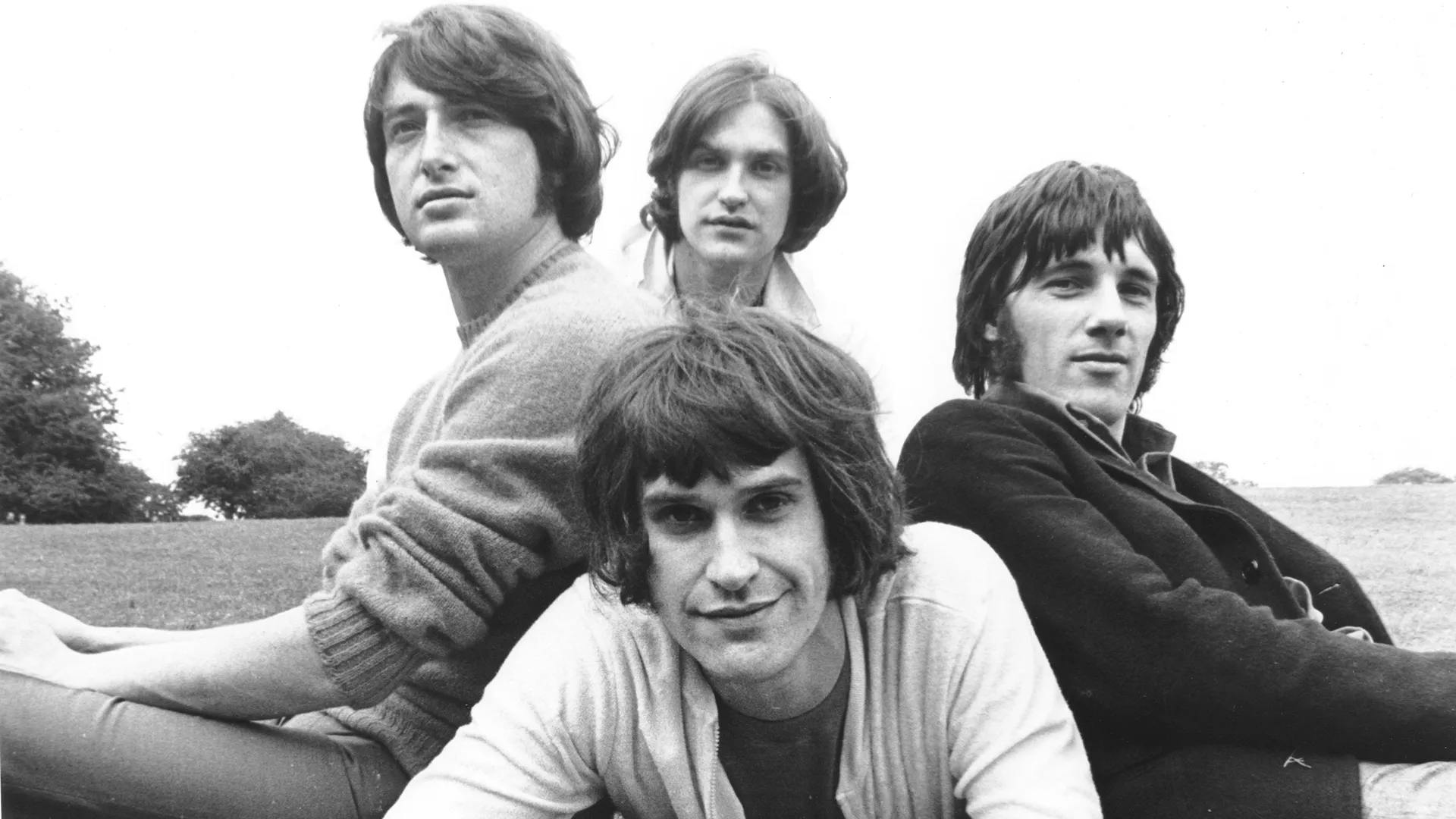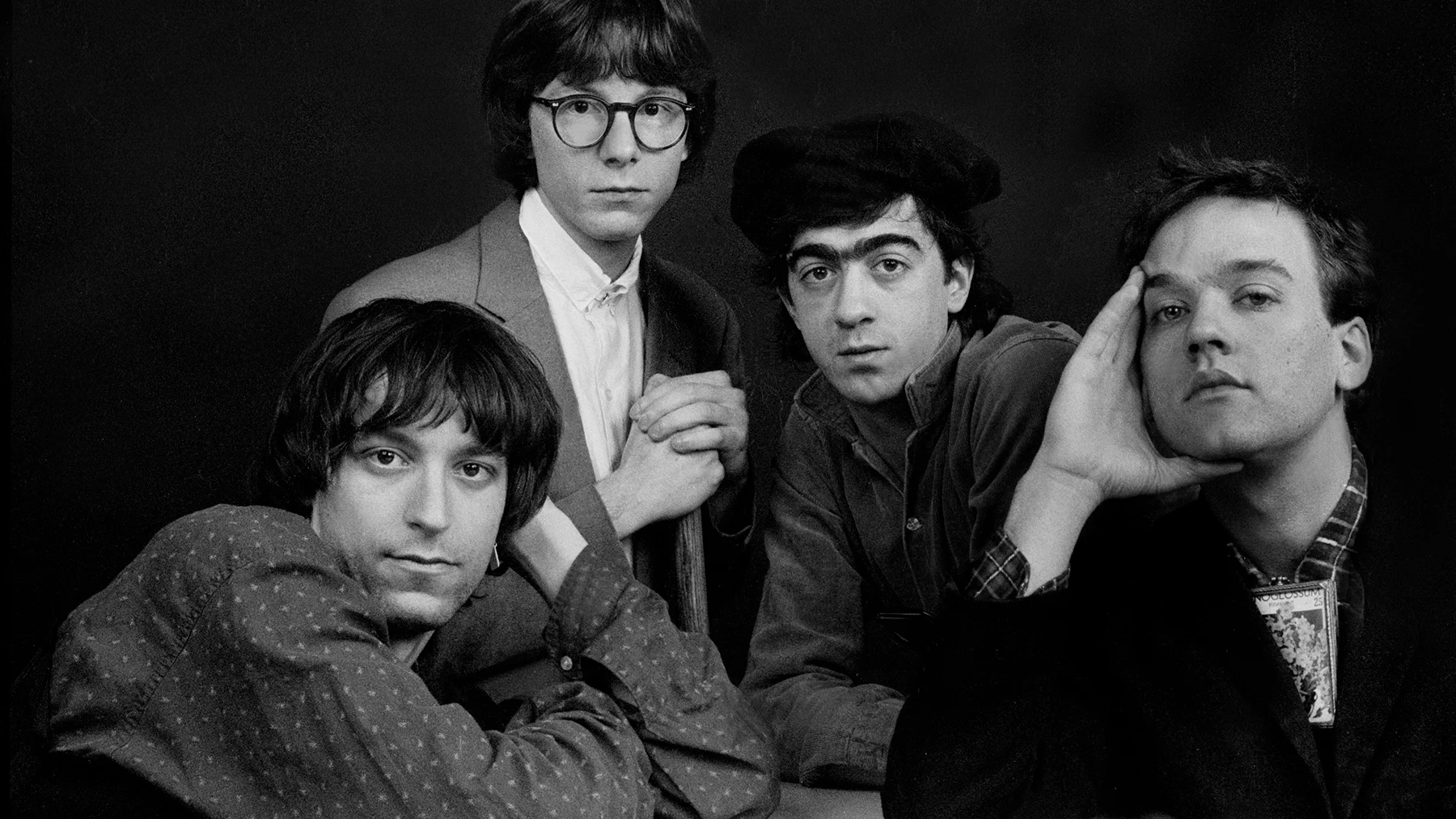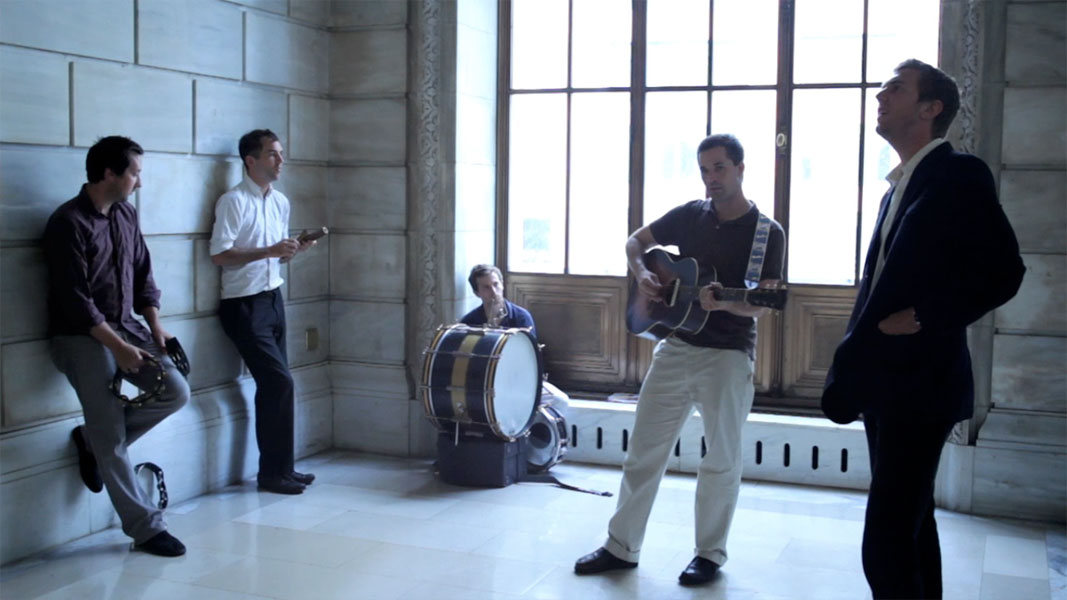
Music nerds love ranked lists. Music nerds love thoughtful commentary. Music nerds love carefully curated playlists. Catalog Crawl provides all of these things and more. In these features, Strange Currencies takes an exhaustive look at the discographies of our favorite artists — the ones who reside at the core of our music obsession.
The man born Charles Michael Kittridge Thompson IV first came to be known to the greater world as Black Francis: leader of the indomitable Pixies; one of the most influential American rock bands of all-time. This year, that group marks twenty years of a reunion that has only seemingly-gained momentum through its two decades as both a touring behemoth and an active recording entity. The original five Pixies records (counting the 1987 debut EP Come on Pilgrim) are sacrosanct: a flawless catalog of omnidirectional fury, effortless hooks, and contemplatively cryptic lyrics. The four LPs that have arrived since — beginning with 2014’s Indie Cindy — have, in contrast, inspired countless debates on the very notion of interfering with an artistic legacy.
And while this site is rife with Pixies admirers of multiple generations, for many of our contributors, it’s the work that Black Francis (aka Frank Black) released in between his time in Pixies that stands nearest and dearest to our hearts. For even the eldest of Strange Currencies staff, Pixies were little more than forbearers— whispered in hushed, reverent tones — by the time that we became engaged music consumers. As such, we largely first encountered Frank Black as a solo artist, at various points during his initial three-album solo arc.
And that fandom was only solidified during the time that Black spent fronting the “back to basics” band, the Catholics. During these years (1998-2003), Black was essentially a cult artist: leading a relentlessly-touring group that spent most of its time crisscrossing the United States and Europe; performing in incredibly intimate venues; and releasing albums with an anachronistic level of prolificacy. In 2004, Black would reunite Pixies, but rather than reconvening the band in the studio, he would spend the next several years following his muse as a solo artist: to Nashville; to rekindling his old moniker; to crafting soundtracks for century-old films.
As such, those years between Pixies records (1991-2014) would yield a rich catalog of remarkable variety; and my intention here is merely to offer one fan’s assessment of the relative merits of its component pieces. I’ve arrived at an official ‘canon’ of twenty Frank Black/Black Francis releases: a number that includes four compilations of non-album tracks, and a 2000 record (Sunday Sunny Mill Valley Groove Day) that was never officially released. I’ve excluded Grand Duchy — a side project with Black’s then-wife, Violet Clark, which yielded two LPs — and a 2011 collaborative record with Reid Paley, for the sake of focusing on solo works. Likewise, I’ve left off 2004’s Frank Black Francis (demos and re-workings of Pixies songs), and 2006’s Christmass (largely composed of live recordings), as well as a handful of contemporaneous and archival live albums.
The playlist parameters are pretty straightforward: I’ve chosen one song from each album. While there is technically a Frank Black “best of” collection — 2007’s 93-03 — it is neither comprehensive, nor widely available. Therefore, I took it upon myself to create the best possible introduction to Frank Black’s solo career. You’ll find a link to the twenty track playlist below. Enjoy!
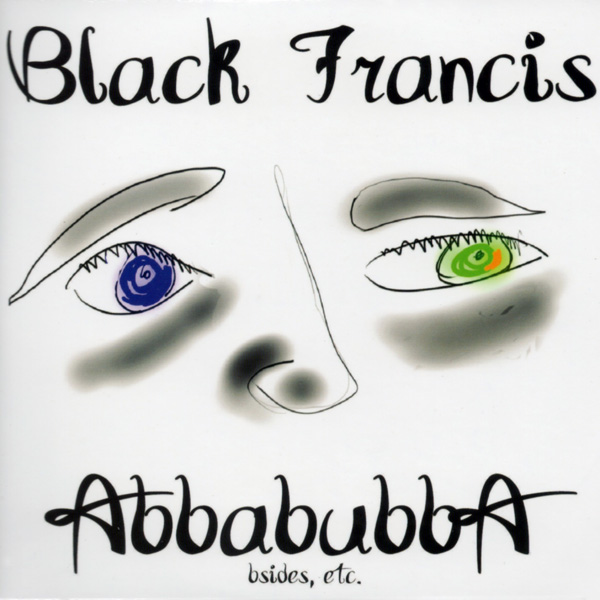
Abbabubba: B-Sides, Etc.
2010
(5.5)
20
Even great artists need to have a low point; and in the grand scheme of things, it’s perfectly fine that Frank Black’s comes with a late-career collection of outtakes, demos, and remixes. And yes, this is certainly the least-essential full-length release in his discography for a number of reasons. First, most of the better tracks are widely available in far superior versions than the skimpy demo treatments here. Next, the ones that aren’t found elsewhere probably wouldn’t be missed too much. And finally, two of the three remixes of the Svn Fngrs track, “The Seus,” are borderline unlistenable. Unless you’re a completist, feel free to skip this one.
One for the playlist: The compilation closing oddball “Virginia Reel” is dumb, but kind of charming all the same. Plus it’s full of Oregon references, so that earns it a few extra points in my book. Still, I’d rather use this spot for an extra Teenager of the Year track, but rules are rules.
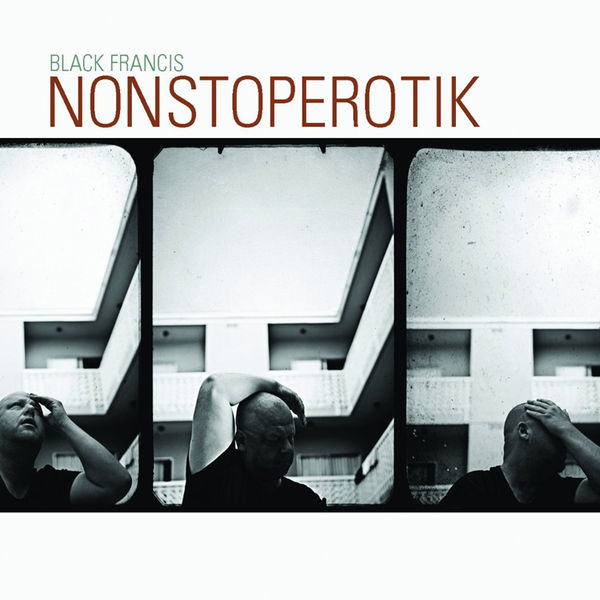
Nonstoperotik
2010
(6.3)
19
Frank Black’s last proper solo LP to date, Nonstoperotik hardly lacks for energy or fire, but it comes up relatively short in the songwriting department. Black is apparently in an amorous mood here — which is fine, I suppose — but it doesn’t exactly lead to the most melodic or memorable set of material in his catalog.
With that said, Nonstoperotik deserves some credit for pushing the envelope in terms of its instrumental arrangements. These are some of the most musically adventurous and nuanced songs of Black’s career to date — or at least since Teenager of the Year — moving far beyond the well-oiled bar punk of the Catholics era, the trad impulses of his Nashville records, and the art punk of 2007’s Bluefinger. In that sense at least, Nonstoperotik is a success.
One for the playlist: While it may be the most traditionally Frank Black-sounding moment on the album, “Dead Man’s Curve” is also Nonstoperotik‘s most well-developed piece of songwriting. It boasts a satisfying hook that elevates it above the other tracks here, and it provides a mid-album jolt of adrenaline.
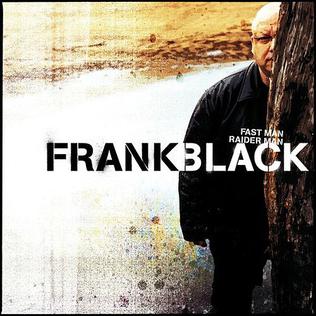
Fast Man Raider Man
2006
(6.4)
18
Working with most of the same Nashville pros that had appeared on 2005’s Honeycomb, the two-disc Fast Man Raider Man continued in much of the same vein as its predecessor. This means that Frank Black is largely operating in slow-to-mid-tempo range here, exploring his long-time fascination with Americana themes, and frequently utilizing his falsetto vocals. So yeah, it’s like Honeycomb, but just with a lot more material.
And of course, we all know the old cliché about how behind every good double album is a great single album. The problem is, I’m not fully convinced that Fast Man Raider Man is all that good of an album to begin with. Listen, I love Frank Black — as the mere existence of this piece should prove — but I can’t help but feel that Fast Man contains a great deal of his least-inspired work ever. Sure, any fan can pick out a handful of highlights — after all, there are twenty-seven tracks here — but few if any stand among his very best, and several songs are just plain dull.
One for the playlist: Fast Man Raider Man starts off on the right note with the Tom Waits-esque opener “If Your Poison Gets You.” Black’s slithery vocal in the verse gives way to a much brighter chorus, and the odd time signatures that have defined his writing from the outset of his career are well-utilized.
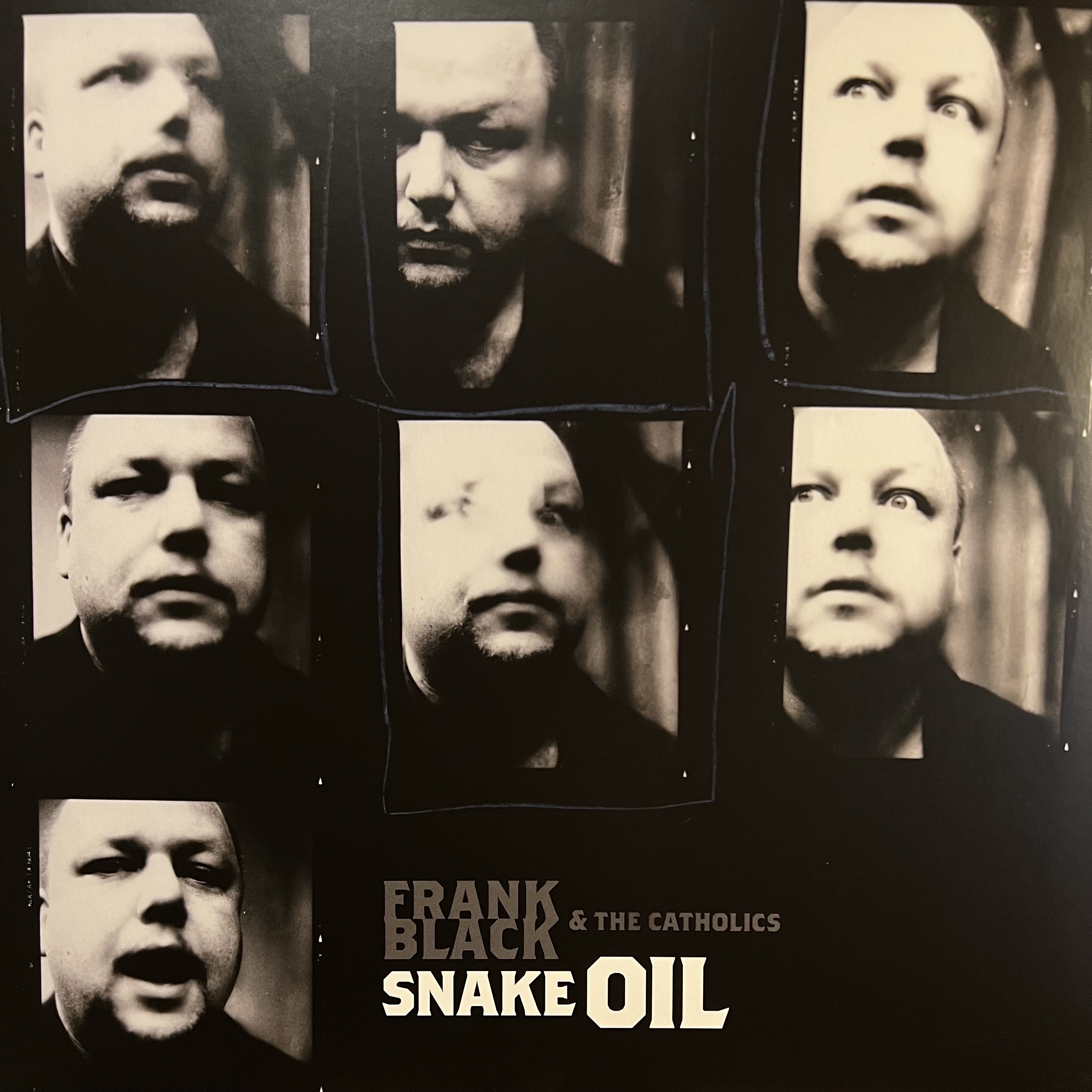
Snake Oil
2006
(6.5)
17
Originally released as an iTunes exclusive in 2006, Snake Oil compiled nine cover songs from the Catholics era — and rounded out the set with the original title track, an outtake from 2003’s Show Me Your Tears. Recently reissued on vinyl — alongside the companion compilation of original outtakes, One More Road for the Hit — Snake Oil provides an intriguing peek at some of Black’s prime influences from this phase of his career.
I’ve written elsewhere about the outsized influence that Black had on my developing tastes during my teenage/early-twenties years, and Snake Oil contains tracks that pointed me in the direction of Springsteen, Angst, Donovan, The Specials, and Bob Dylan’s “wilderness” era — the latter, in particular, seemed to provide something of a guiding light for Black’s Catholics years.
One for the playlist: Originally included as one of three B-sides on the “All My Ghosts” single, Black’s version of Dylan’s “Changing of the Guards” is arguably his finest cover. I had never heard the original before hearing the Catholics’ take, but it immediately put me on a path of discovering Dylan’s “post-peak” work.
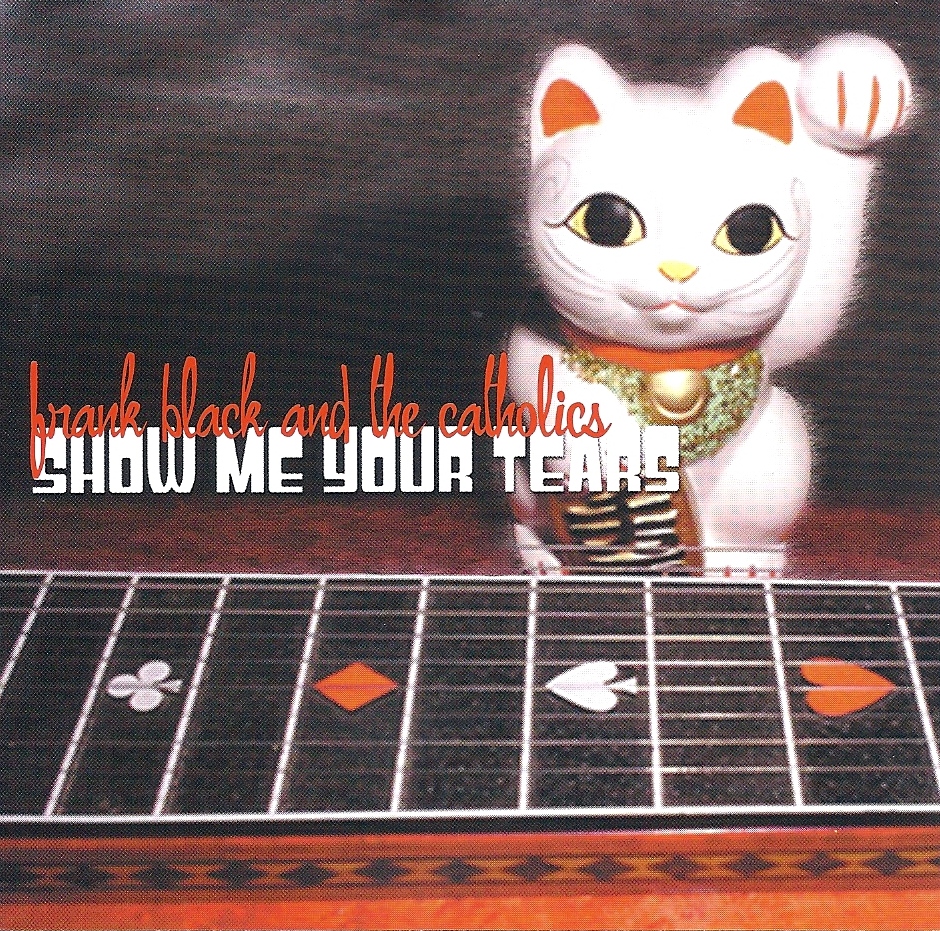
Show Me Your Tears
2003
(6.8)
16
The final album that Frank Black recorded with the Catholics, Show Me Your Tears stands as the thematically bleakest release of his career. Often described as Black’s divorce record, it trades in the cryptic hallmarks of his writing for something far more direct and personal; but while it does contain a handful of worthwhile songs, Tears is far from his Blood on the Tracks.
There’s a weariness clawing at these songs, that — while in keeping with the themes of heartbreak and reluctant new starts — doesn’t exactly play to the strengths of the Catholics. And while the expansive guest list (Van Dyke Parks alert!) helps to add some variety to the arrangements, these tracks often fail to match the quality of those on recent albums like Dog in the Sand and Black Letter Days. Granted, Show Me Your Tears was undoubtedly a therapeutic record for Black, and in its strongest moments — “Everything Is New,” “Horrible Day,” “Massif Centrale,” and “Manitoba” — it adds a few more gems to his catalog.
One for the playlist: Framed by the tragic stories of Chet Baker, Hank Williams, and Johnny Horton, “Everything is New” is the true standout track from Show Me Your Tears. Not only does it feature the record’s most compelling imagery and storytelling, it provides one last glimpse of the instrumental interplay that made the Catholics such a powerhouse band.
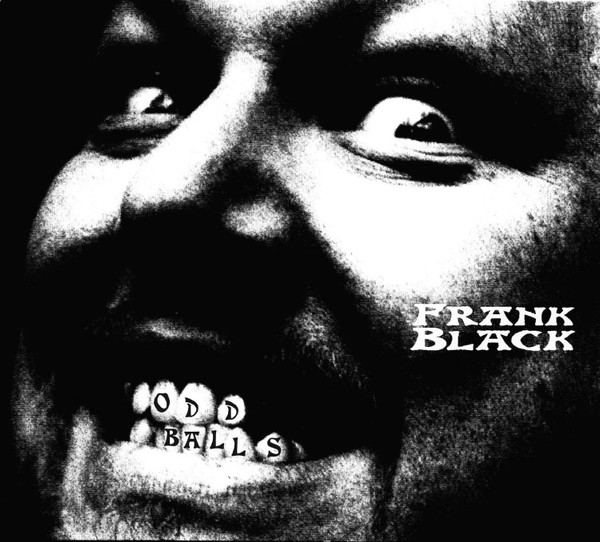
OddBalls
2000
(7.0)
15
The first of several Frank Black outtakes collections — for what it’s worth, it followed hot on the heels of my own homemade disc that I titled At the End of the World — OddBalls is a predictably mixed bag of stray tracks from Black’s first five years as a solo artist. Containing an assortment of covers, experiments, and a few real gems, it functions relatively well as a bonus album, despite lacking the technicolor sprawl of Black’s first two records. Granted, it’s all a bit scattershot — and is missing a pair of the era’s best B-sides in “Surf Epic” and Black’s cover of The Kinks’ deep cut “This Is Where I Belong” — but no respectable Frank Black collection is complete without OddBalls.
One for the playlist: Originally released on the X-Files compilation Songs in the Key of X, “Man of Steel” closes out OddBalls on its highest note. The liner notes for OddBalls dismissively refer to most of its tracks by citing Black’s primary inspiration for each (Dylan… Bowie… Strummer…). For its finest track, Black just states, “trying to be me.”
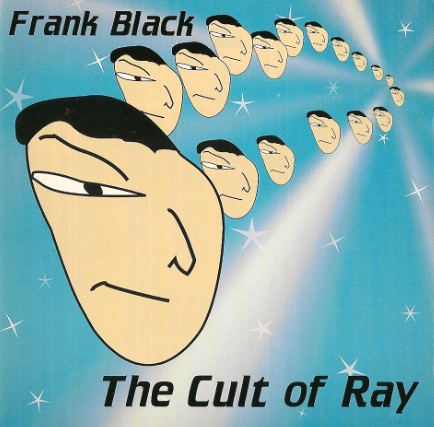
The Cult of Ray
1996
(7.1)
14
Frank Black’s third solo album gets a bad rap. Coming after the kaleidoscopic variety of his first two records, and before the stated “back to basics” of the Catholics era, The Cult of Ray stands on an island of its own in Black’s catalog: viewed as a disappointment in light of what came before, and a tentative half-step toward what came after. But while neither of those characterizations are totally baseless, there’s still a lot to enjoy on this decidedly transitional record.
Ray finds Black veering between some of his most cryptic work to date, and rather ho-hum commentary on contemporary pop culture — unless we’re to believe that there is something much deeper lurking beneath the surface of tracks like “Punk Rock City” or “Dance War.” And, padded out by a pair of instrumentals, Ray‘s thirteen songs feel slight in the wake of Teenager of the Year‘s epic sprawl.
But avoiding this one means missing out on some real winners: the Teenager-era outtake “Man in Black” is a sparkling Frank sci-fi classic; “You Ain’t Me” features a great twin guitar attack; “The Creature Crawling” is understated but slinky; and “I Don’t Want to Hurt You (Every Single Time)” is one of his best ballads of the era. It was quickly dismissed at the time — and overlooked still — but there’s great stuff to be found here.
One for the playlist: A joyously rollicking commentary on conspiracy and paranoia, “Men in Black” is a clear highlight, and one of Black’s finest songs of this era.
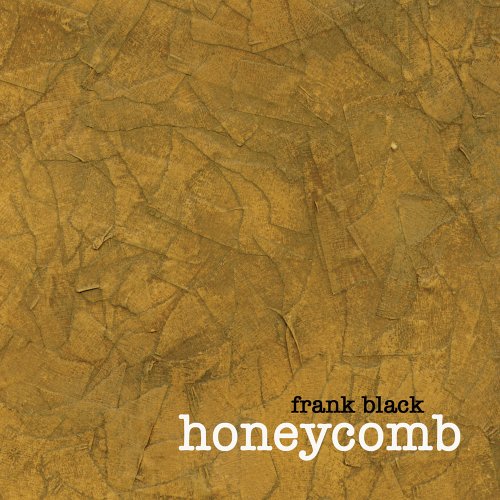
Honeycomb
2005
(7.1)
13
On one hand, it’s really nice to hear Frank Black get down to the elemental basics on his first Nashville album, 2005’s Honeycomb. He and producer Jon Tiven assemble a crack band, highlighted by country/soul luminaries like Steve Cropper, Spooner Oldham, and Reggie Young. The playing throughout is graceful, nimble, and intuitive; and it’s all captured warmly in an (almost) entirely live manner.
On the other hand — as was also the case with Fast Man Raider Man — much of the material on Honeycomb feels undercooked, making the record come off as something of a lost opportunity. The aforementioned pleasantness of the sessions is certainly inviting, but too often these songs feel slight once their surfaces are scratched.
But again, the vibes here are plenty immaculate, and when the material is on, it’s excellent. “I Burn Today” is rightfully viewed as a highlight, as is the closing “Sing for Joy.” Elsewhere, “Atom in My Heart” is a subtle charmer; “Selkie Bride” and “Honeycomb” conjure intriguing atmospheres; and “Strange Goodbye,” a duet with Black’s ex-wife Jean — they had only recently divorced — is endearing as all hell.
One for the playlist: Several months before Honeycomb was released, I came into possession of an early leak of the album, sequenced with “Sing for Joy” as the opener. It’s always felt better there than as the closer that it became on the eventual release, but either way, it’s easily my favorite track here.
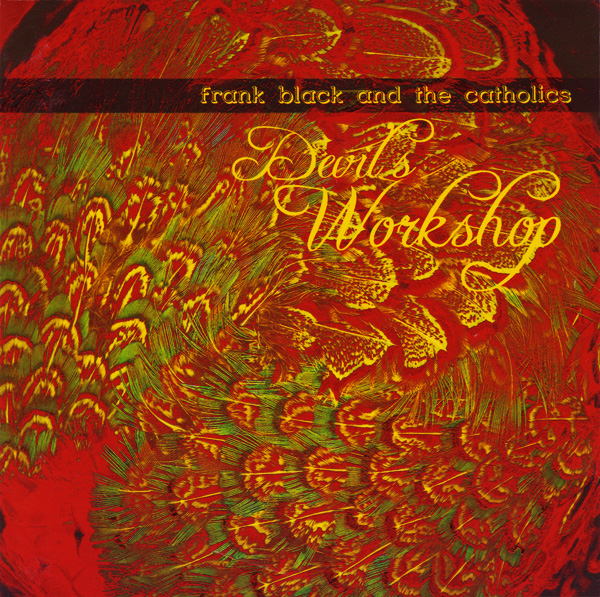
Devil’s Workshop
2002
(7.2)
12
Released on the same day as Black Letter Days, Devil’s Workshop is a tidier, punkier antidote to its more expansive counterpart. Not only does it feature a scaled-back ensemble, but its eleven tracks whiz by in a taut thirty-three minutes, making for the leanest album in Frank Black’s catalog to date.
But ‘tidy’ and ‘lean’ don’t mean inconsequential. In fact, the first half of Workshop houses some of the finest tracks of the Catholics years, in the completion of an old Pixies demo (“Velvety”), a breezy road song (“Out of State”), and a cryptic Elvis/Graceland homage (“His Kingly Cave”). The second half lags a bit in comparison, but it’s never less than satisfying.
One for the playlist: I’m a sucker for long-winded, circular choruses (think “Modern Love”), and “San Antonio, TX” boasts a particularly lovely one. The whirling Wurlitzer organ provides a charming underpinning to one of the catchiest hooks in Black’s solo discography.

Pistolero
1999
(7.2)
11
Released only six months after 1998’s Frank Black and The Catholics — which had been held up as Black was shopping for a label — Pistolero was the work of a slightly different group, as it found Rich Gilbert replacing Lyle Workman as the Catholics’ lead guitarist. Compared to its predecessor, it’s a more punk-ish, temperamental affair, but it’s arguably the more consistent of the pair.
The songs find Black leaning into the western imagery suggested by the album title, and it’s in this alchemy that Black would eventually find his strongest inspiration of the Catholics era. However, Pistolero is partially held back by a handful of tracks whose choruses fizzle rather than charm. Among these, “I Love Your Brain” and “Smoke Up” are great at establishing a mood, but ultimately do little with it. And the less said about the late-album dud — and inexplicable first single — “I Want Rock & Roll,” the better.
But the strong material here is more than solid, and occasionally outstanding: should-have-been single “Western Star” is worthy of its mid-song Bowie reference; “Billy Radcliffe” finds Black marrying his love of western/sci-fi imagery; and the cryptic desert travelogue “Skeleton Man” is a genuine treat. Pistolero offers compelling evidence that the quick arrival of new Frank Black albums during the Catholics era could be both a blessing and a curse; but the best tracks here are fantastic.
One for the playlist: Swaggering and soaring, “Western Star” threads the needle between back-to-basics rock, punk, and glam. It throws hook after hook at the listener, and that’s even before it kicks into higher gear during the bridge.
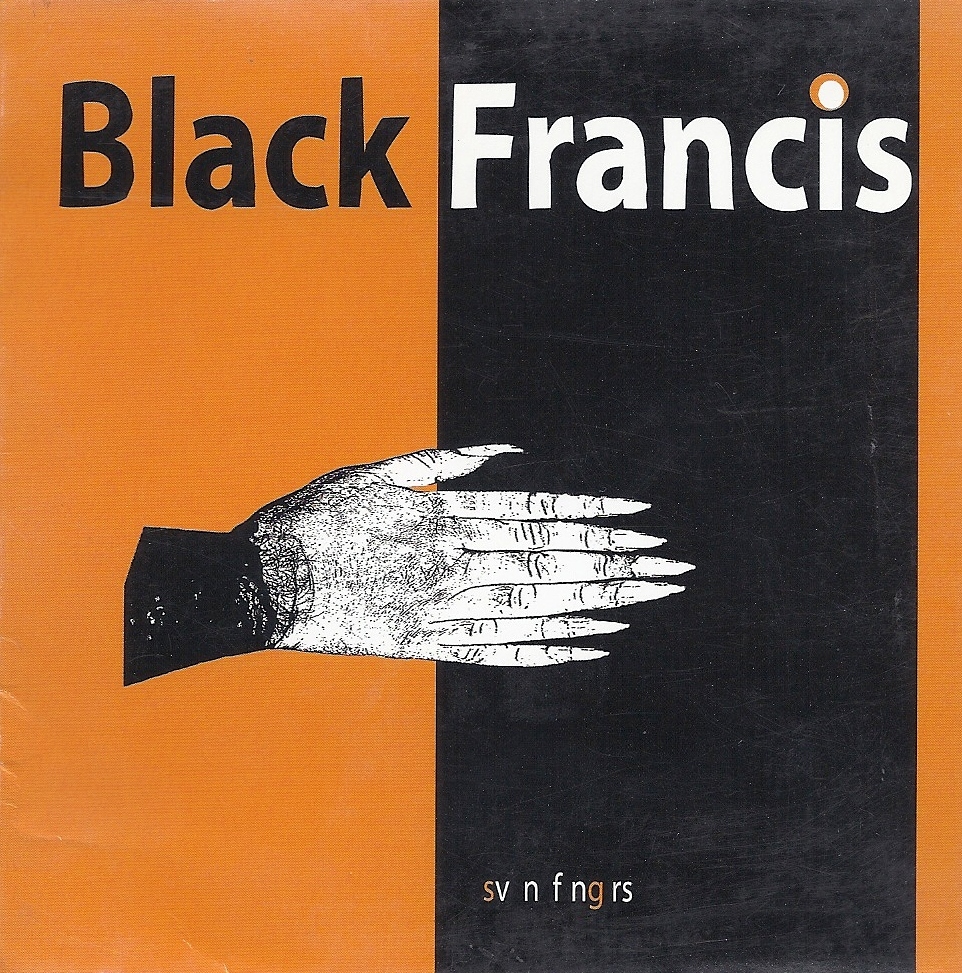
Svn Fngrs
2008
(7.3)
10
Arriving several years into the ongoing reunion of Pixies, the 2008 mini-LP Svn Fngrs is one of the most overtly Pixie-esque releases in Frank Black’s solo discography. Its seven songs embrace odd time signatures, lyrical abstraction, and the LOUD/quiet/LOUD dynamic that made Pixies such a massively influential act.
And while it’s a comparatively minor release in his catalog, Svn Fngrs covers an impressive amount of stylistic ground during its brief run-time. Informed not only by Pixies, these tracks also brim with the western inflections of the Catholics, and the folkier impulses of Black’s Nashville records. Collectively, they make for a deceptively rich listen.
One for the playlist: Arriving at a satisfying equilibrium between Pixies and the Catholics, closer “When They Come to Murder Me” is the standout here. It’s a dynamic track that pairs vivid verses with a genuinely excellent chorus.
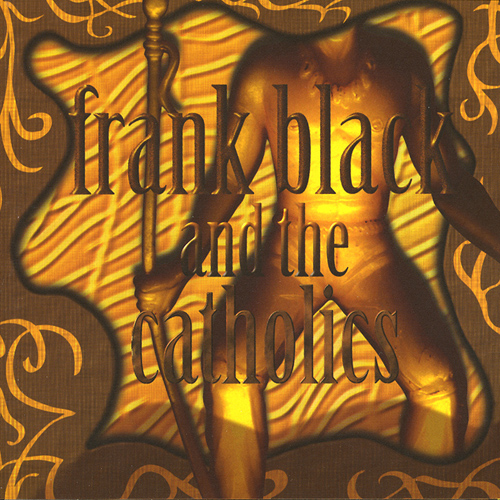
Frank Black and The Catholics
1998
(7.4)
9
While The Cult of Ray had found Frank Black working with the same band — and employing minimal overdubs and studio effects — its follow-up truly brought about a new phase in his career. With the newly-dubbed Catholics in tow, Black set out to engage in an act of artistic discipline, by recording his next several albums live-in-studio. The first fruits of this approach, 1998’s Frank Black and The Catholics, is raw, tuneful, rocking, and stands as a favorite of both Black himself, and many fans.
There’s a refreshing directness to FB&TC, and a musical synergy that could only have been developed by a relentlessly-touring band. The live-to-tape approach suits them well, as does the mixing decision to hard pan the guitars of Black (left) and Lyle Workman (right). These tracks burst with the energy derived by their face-to-face recording, and even when the material lags — as it does a bit in the second half — the spirited performances make it worthwhile.
And really, much of this material is quite excellent. The hooks are sharp and plentiful, and Black finds plenty of inspiration in more terrestrial themes than those covered on his previous few records. But even if these songs seem comparatively grounded upon first listen, there are — as one would expect from Black — plenty of layers to discover.
One for the playlist: Lead single “All My Ghosts” is easily one of the finest tracks of Frank Black’s career. It matches the raw energy of the Catholics era with a great melody, a killer backing hook, and dense lyrical imagery.
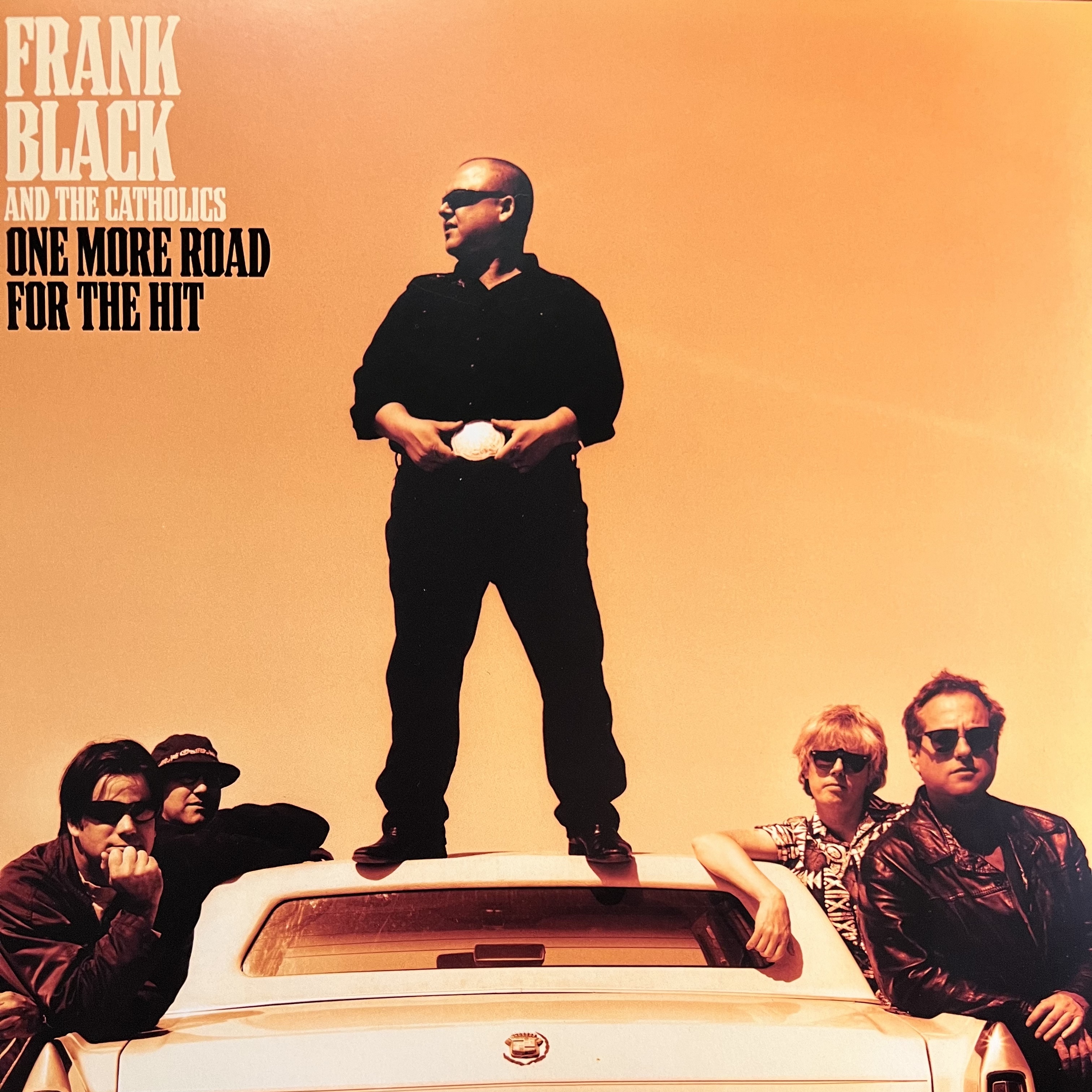
One More Road for the Hit
2006
(7.5)
8
Originally released alongside Snake Oil, One More Road for the Hit matched that set of covers with a baker’s dozen of original outtakes from the Catholics years. And given the fact that many of the era’s best tracks were relegated to B-sides, this stands as an essential set for Frank Black fans.
The biggest draws here are five tracks from Sunday Sunny Mill Valley Groove Day — albeit a couple of them appear in different versions. Among those, the spectral “Pan American Highway” is an absolute knockout. Elsewhere, a pair of winners from the “All My Ghosts” single (“Humboldt County Massacre” and “Living on Soul”), a jumpy shape-shifter left off of Pistolero (“Valley of Our Hope”), and track that appeared on a compilation of songs inspired by Powerpuff Girls (“Pray for the Girls”) are all highlights.
One for the playlist: Given that the best track here will appear a little further up the list, it’s a tough choice between the two original “All My Ghost” B-sides — both of which stand among my favorite Frank Black songs. I’ll give a slight edge to “Humboldt County Massacre,” especially since the version that appears here easily surpasses the alternate ones found elsewhere.
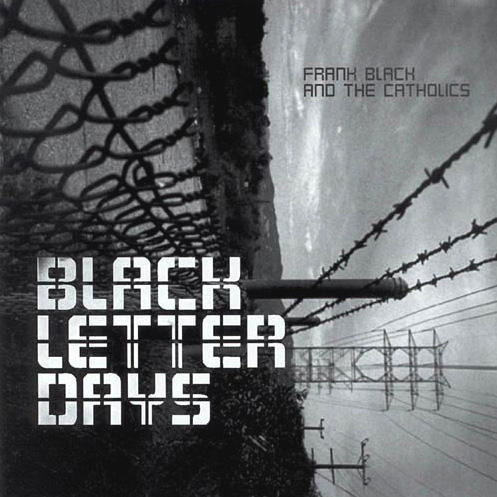
Black Letter Days
2002
(7.8)
7
The companion piece to Devil’s Workshop, Black Letter Days is a far more sprawling affair, spreading eighteen songs over a sixty-five minute run time. And of the pair, it’s also the more fleshed out record, taking advantage of the expanded lineup that had first been employed on 2001’s Dog in the Sand.
While some have argued that there’s ultimately a stronger, more pared-down album lurking in the track list, the widescreen nature of Black Letter Days helps to make it one of the more compelling releases of the Catholics era. The best songs here are given ample space to breathe, and even the less consequential ones help to sustain the jaded mood that permeates throughout the album.
And though this is perhaps a minor — but persistent through the Catholics years — gripe, I do wish a little more effort had been put into the cover art. The original CD release is uninspired enough, but the vinyl reissue only further exhibits the low-res quality of the image — even when (very) liberally boxed out with a black border. C’mon, Frank…
One for the playlist: Another great Catholics road song, “End of Miles” is the highlight here. Four guitars — including a pedal steel — create a swirling and evocative extended outro, and Black’s lyrics capture both the weariness and intrigue of a long road trip.
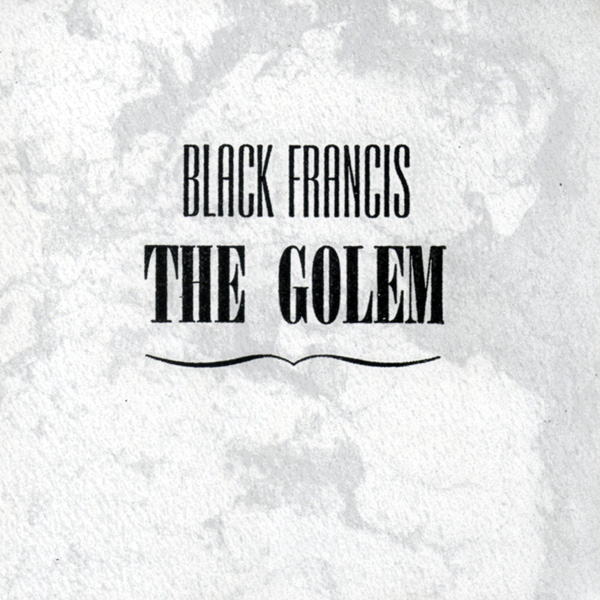
The Golem
2010
(8.0)
6
What a pleasant surprise this one turned out to be. There are myriad reasons why Frank Black’s soundtrack to the 1920 German Expressionist silent film The Golem shouldn’t work. In fact, partway through my first viewing of the film synced with Black’s soundtrack, I was pretty damn sure that it wasn’t working. After all, there’s a bit of a disconnect that goes well beyond the ninety-year gap between the visual and audio components. This — coupled with the fact that Black knocked out all of these songs in a matter of days — doesn’t exactly seem like a recipe for success.
However, at a certain point, the escapism that lays at the heart of so much great art takes over, and Black’s slightly-on-the-nose rock songs weave their way into a genuinely fascinating piece of film. And if nothing else, the mere existence of this soundtrack at least clued me in to a film — and a genre — that I will most definitely revisit.
But the truth is that these songs function plenty well on their own. Standing as something of a last word — at least for the time being — on Black’s solo career, The Golem ends an era on a true high note. These songs, spontaneous as they may be, are some of the most tuneful, varied, and affecting work in his catalog, and assembled together in the “rock album” running order, they stand as one of Black’s finest releases.
One for the playlist: Appearing midway through the film, “The Obedient Servant” is easily one of the loveliest songs in Black’s discography. It’s a genuine gem that stands out among several really excellent tracks.
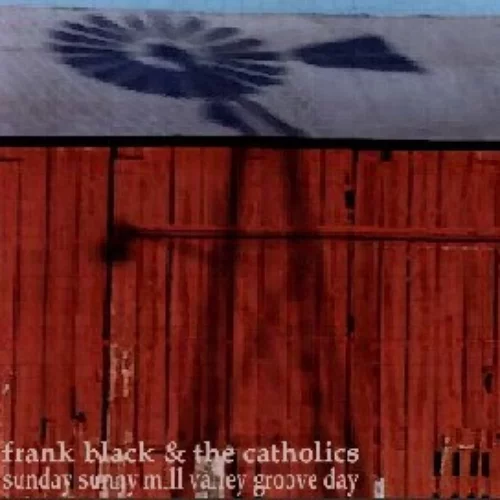
Sunday Sunny Mill Valley Groove Day
2000
(8.0)
5
Never officially released — though most of its tracks were eventually included on compilations — Sunday Sunny Mill Valley Groove Day was the ultimate Frank Black fan artifact: a “lost” album from the peak years of the Catholics. Distributed by the man himself to a small group of fans via CD-R, SSMVGD quickly found its way online, near the initial peak of file-sharing. Finding the whole thing wasn’t easy pre-YouTube — my own Napster-assembled version wrongly included an acoustic demo of the title track — but the effort paid off, as SSMVGD is one of Black’s most consistently-rewarding solo releases.
SSMVGD is decidedly looser — some might say sloppier — than the standard Catholics fare, but that’s part of what makes it such a charming collection. It’s also a bit murkier, but some of that could be a result of its unorthodox way of reaching fans. There are times that I think it might be the best Catholics album, but that could just be a reflection of the fact that it required genuine effort to track down (and distribute to my Frank Black-obsessed friends). SSMVGD is something of a puzzling paradox, but that’s part of why we love it.
One for the playlist: Even if SSMVGD is a minor (non)release in Frank Black’s catalog, there’s nothing minor about “Pan American Highway.” A winding travelogue with several apparent references to Jack Kerouac’s On the Road, it stands among the finest tracks that Black has ever penned — including his vaunted work with Pixies.
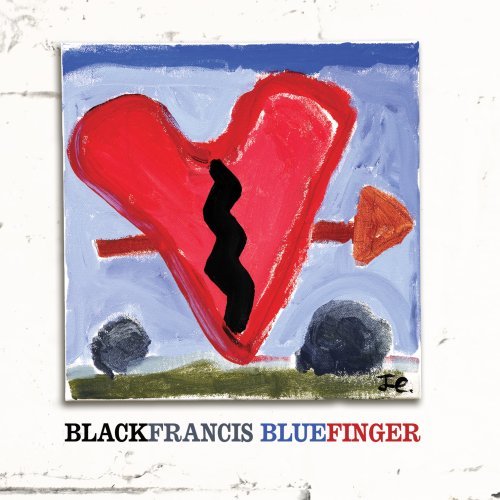
Bluefinger
2007
(8.2)
4
Readopting his Pixies-era moniker upon its release, Bluefinger was a genuine return to form from (Frank) Black Francis, following the laid-back vibes of his Nashville era records. Reenergized, reinvigorated, and freshly inspired by working in the trio format, Bluefinger was easily Black’s finest record in several years when it arrived in the summer of 2007.
Rumors swirled at the time that Bluefinger was comprised of songs that Black had written with Pixies in mind, and the spare arrangements here seem to suggest plenty of room for Joey Santiago’s signature jagged leads. It’s even easier to imagine Kim Deal’s vocals in place of the ones provided by Black’s then-wife, Violet Clark. Whether or not this speculation was merited, there’s little doubt that Black is in his element throughout these eleven lean and rocking tracks.
And while the material here is uniformly solid, perhaps the most notable thing about Bluefinger is its thematic unity. Largely inspired by the life and death of Dutch painter/musician Herman Brood, Bluefinger is arguably the closest thing that Frank Black has ever crafted to a concept album. And both in and out of any narrative context, each of these songs stand as a vibrant addition to his discography.
One for the playlist: While there’s nary a weak track on this one, it’s the mid-album gem “Angels Come to Comfort You” that stands as the highlight of Bluefinger. Divided into two distinct sections, the song traces the last days of Herman Brood’s life, his suicide, and simulates his death with an ethereal, wordless extended outro.
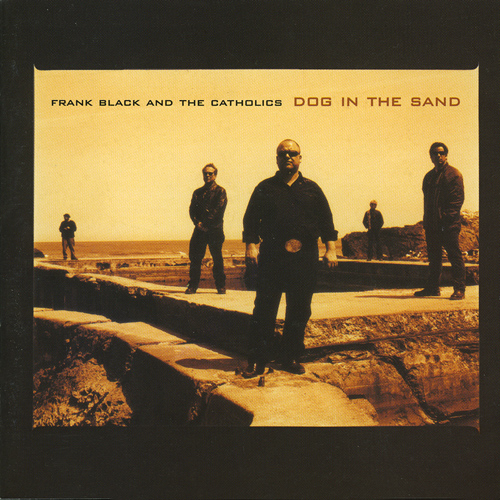
Dog in the Sand
2001
(8.6)
3
The runaway favorite of the Catholics era, 2001’s Dog in the Sand found the core group expanded to a quintet with the addition of guitarist Dave Philips; but it also makes excellent use of guests Joey Santiago (guitar), Moris Tepper (banjo), and Eric Drew Feldman (keyboards). While still recorded live to two-track, the extra hands on deck make for a far more lush and diverse sonic palette.
But what truly sets Dog apart is the consistent excellence of the material. Frank Black sounds reinvigorated as a writer, turning in one of his finest sets of post-Pixies songs, and sounding truly inspired by the road-weary motifs that had been explored on the first two Catholics records. Lyrically and melodically, all twelve songs on Dog shine, making for the group’s one true filler-free album. Gems abound, from the Stones-y swagger of “Hermaphroditos,” to the cryptic “Robert Onion,” to the languid and lovely title track.
One for the playlist: Dog in the Sand‘s chilling centerpiece, “St. Francis Dam Disaster” harkens back to the disaster ballads of pre-war American folk music. The lyrics — which were largely adapted from a contemporaneous epic poem about the incident — manage to make a sympathetic character out of the rushing wall of water that killed over 400 Californians in 1928; and the swirling instrumentation projects an equally majestic scene.
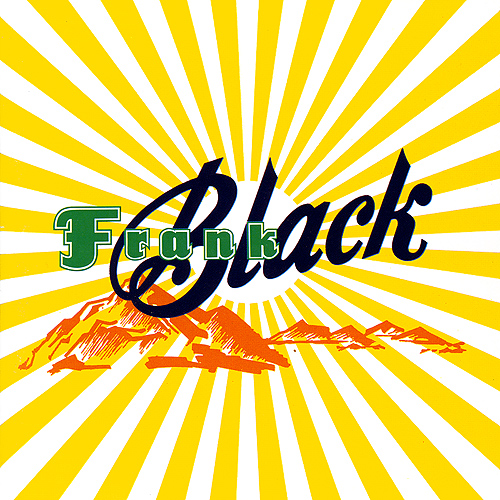
Frank Black
1993
(9.0)
2
In many ways, one can find throughways between Frank Black’s solo debut, and Pixies 1991 swan song, Trompe le Monde. Certainly Eric Drew Feldman’s presence on keyboards establishes a link; as do the sci-fi, mid-century fascinations that dot the landscape of both records. But where Trompe le Monde was definitively a band affair — even if Frank exercised more influence over Pixies than ever before — Frank Black is far more insular, idiosyncratic, and… weird.
And it’s all the better for it. These songs brim with lush sixties-pop affectations that, at best, had only ever lurked along the periphery of Pixies tracks. Feldman’s keys — along with well-deployed guest spots from Joey Santiago, Moris Tepper, and John Linnell — add to the retro-futurist noir vibe of the record. Songs undergo radical transformations mid-stride, adding to the already-surrealist surroundings.
And through it all, Frank Black serves as a verbose master of ceremony: content for you to tag along for the ride, but with an air of detached coolness that makes it seem as if he doesn’t care if you choose to sit it out. But that bright sunburst on the album’s cover beckons you to come along; and who are you to turn down the invitation?
One for the playlist: 90s indie rock rarely gets better than “Los Angeles.” Veering between its folky intro, thrashing verses, and Beatle-esque coda, it’s a miniature masterpiece in modular form. Brian Wilson might call it a “pocket symphony,” but it was a simply stunning first impression of Frank Black as a solo artist.
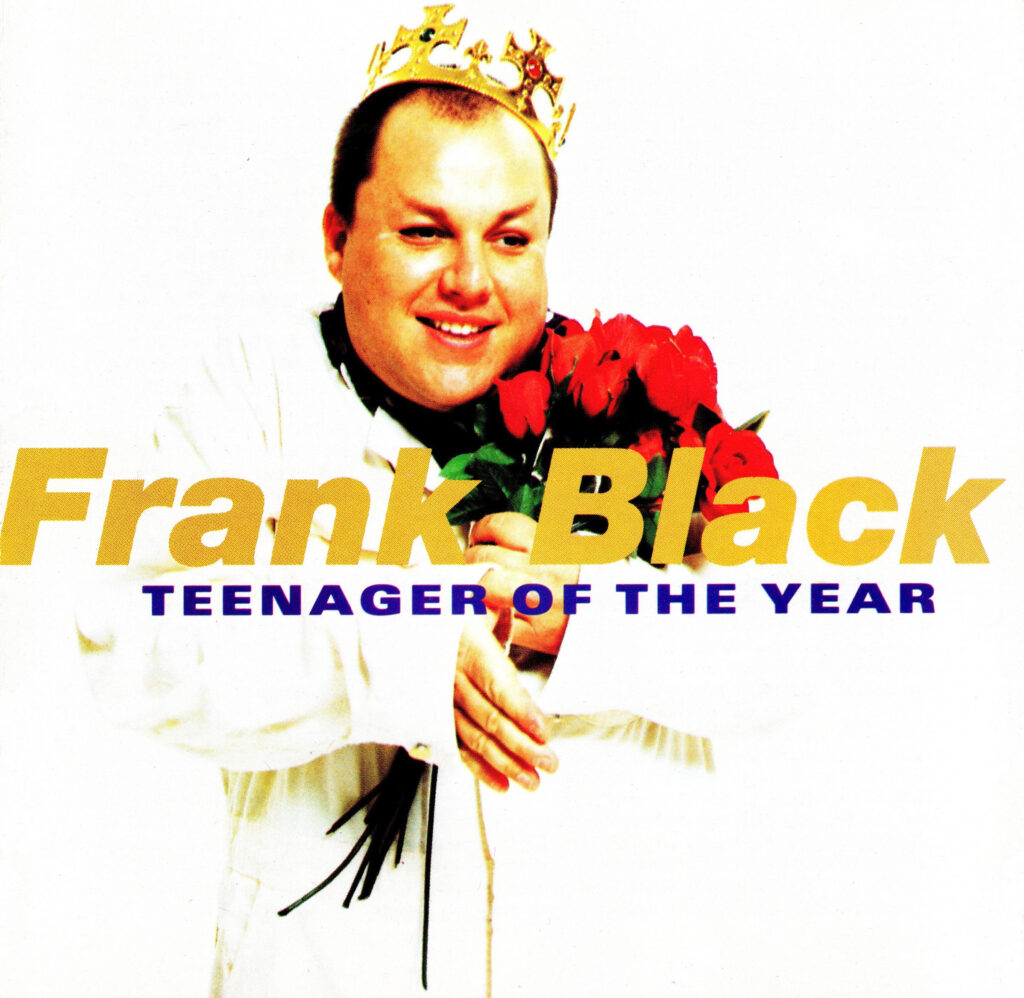
Teenager of the Year
1994
(9.7)
1
I’ve threatened before to write a lengthy treatise on why Teenager of the Year is one of the greatest — and most absurdly underrated — albums of all-time, but that’s not what I’m going to do here. The word count of this piece is already significant, and I’ve got a self-imposed deadline to meet. But, in short, Teenager of the Year is certainly one of the finest rock records of its — or any — time.
Put simply, Frank Black’s second solo LP is an embarrassment of riches: twenty-two immaculate power-pop gems, full of dense lyrical allusions, inventive arrangements, and hooks galore. There is a career’s worth of ideas on display here, in both the depth and breadth of the material. These are songs to analyze; to gaze in astonishment at; to study.
At least that’s what they were to my friends and I as we discovered the appropriately-named Teenager during our own transition from childhood to adulthood. And in these songs, we found a shared link between the visceral appeal of rock/punk, and the intellectual impulses that we were soon to be surrounded by as undergrads. These songs contained layers and layers and layers (sorry, wrong album….), and that’s the way that we liked it. They were coded mini-masterworks, that happened to kick ass.
I can’t fully explain it; but I can assume that, at eighteen, you and your friends also had an album that surrounded your most treasured memories. An album that you all reached for when nothing else in the Case Logic jumped out at you. An album that you collectively adored. I sure hope that you all had that album. But I can say, with relative confidence, that ours was better.
One for the playlist: My favorite song from Teenager is probably “Calistan”: a windingly dense road song that traces several generations of California history in an immaculate chorus. But we’ve already got plenty of great travelogues from the Catholics era. Besides, there’s another masterpiece on this album. Released as Teenager‘s lead single, “Headache” is arguably the best-ever display of Frank Black’s pop sensibilities — perhaps even surpassing Pixies’ “Here Comes Your Man.”


